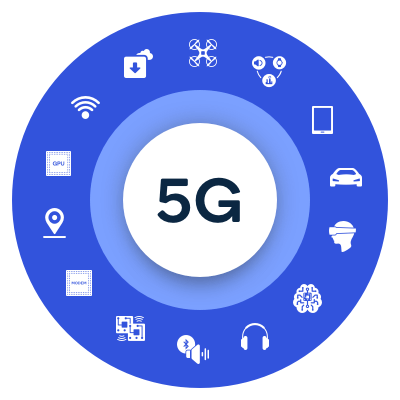A2102 Insights
Explore the latest trends and news on technology, lifestyle, and more.
The 5G Effect: How It’s Changing Your Everyday Life
Discover how 5G is revolutionizing your daily life with lightning-fast connections and smarter tech. Don't miss out on the future!
How 5G Technology is Revolutionizing Smart Homes
The advent of 5G technology is fundamentally transforming the landscape of smart homes. With its enhanced speed and reduced latency, 5G facilitates seamless communication between smart devices, enabling them to work together more efficiently than ever. For instance, the rapid data transfer allows for real-time video surveillance, ensuring that homeowners can monitor their premises at any given moment. In addition, smart appliances, like refrigerators and thermostats, can receive updates and perform tasks almost instantaneously, making home management easier and more intuitive. According to Forbes, the reliability of 5G networks opens the door to previously impossible scenarios in home automation.
Moreover, 5G technology enhances the integration of artificial intelligence in smart home systems. With faster data processing capabilities, AI-driven devices can analyze and respond to user behaviors more effectively, leading to personalized experiences. For example, voice assistants can understand commands and execute tasks with minimal delay, creating a more enjoyable user experience. With the potential for extensive connectivity, a TechRadar report highlights how 5G can connect thousands of devices in a single household, paving the way for greater innovation in home automation and security solutions.

The Impact of 5G on Healthcare: A New Era of Telemedicine
The advent of 5G technology is revolutionizing the healthcare industry, paving the way for an unprecedented era of telemedicine. With its promise of ultra-fast data transfer speeds and reduced latency, 5G enhances real-time patient monitoring and enables seamless communication between healthcare providers and patients. This capability is particularly crucial in remote areas where access to medical facilities is limited, as 5G can facilitate high-quality virtual consultations, thereby improving healthcare accessibility. Additionally, the possibility of using advanced technologies like augmented reality (AR) and virtual reality (VR) for training and patient treatment becomes more feasible with 5G's enhanced capabilities.
Moreover, the integration of 5G can lead to better health outcomes through the use of wearable devices that constantly collect patient data. This continuous stream of information allows for real-time analysis, enabling proactive interventions and personalized treatment plans based on individual health metrics. As healthcare systems worldwide strive to become more efficient, the speed and reliability of 5G networks will be instrumental in facilitating telehealth services and ensuring that medical professionals can deliver timely care. This technological shift not only represents advancements in patient care but also signifies a move toward a more connected and intelligent healthcare landscape.
Is 5G Making Your Daily Commute Easier?
The advent of 5G technology is transforming various aspects of our daily lives, and commuting is no exception. With significantly faster download and upload speeds, 5G enables real-time navigation updates, which ensures that commuters can access the most accurate information about traffic and weather conditions. This improved connectivity allows rideshare services like Uber and Lyft to optimize routes more efficiently, reducing wait times and enhancing overall passenger experiences. As reported by Forbes, commuters can expect a smoother journey thanks to these advancements.
Moreover, the lower latency offered by 5G means that public transport providers can leverage smart sensors and advanced IoT devices to enhance operational efficiency. Passengers using trains or buses can receive real-time updates on arrivals and departures, making it easier to plan their schedules. According to BBC News, this connectivity not only improves the commuter experience but also contributes to more reliable and sustainable public transport systems. In this way, 5G is indeed making our daily commute easier and more efficient than ever before.